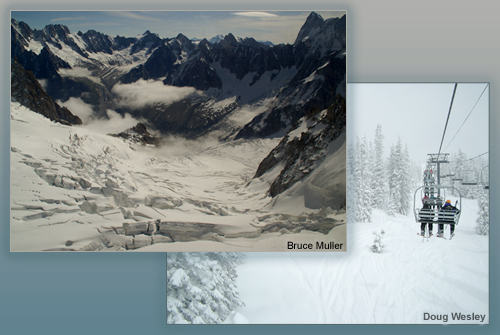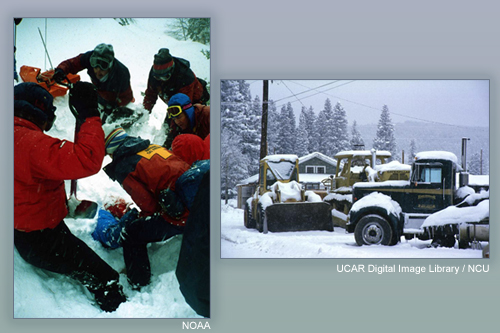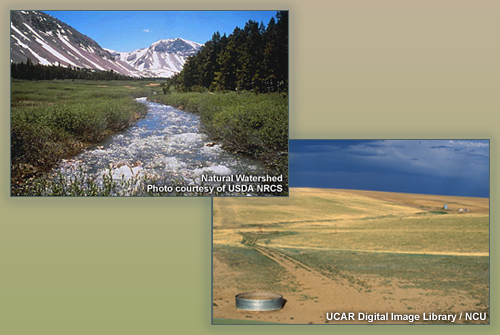Snowpack and Its Assessment
Importance of Snowpack
Snowpack is the lifeblood of the U.S. Rocky Mountain west and other mountainous areas of the world. Although mountain ranges cover a very small fraction of the Earth's land regions, the water stored in their snowpack feeds lakes and rivers, which irrigate crops and supply water for many of the world's heavily populated areas.
Ski areas bring in tourist dollars that bolster or even form the backbone of local economies.

Snowpack is not always beneficial though. Large amounts of money are spent on public transportation and safety during snow events, and dozens of people are killed annually in avalanches.

As winter transitions to spring, rapid snowmelt can cause flooding and flash flooding, even when atmospheric conditions are dry. In addition, dry winters can worsen drought conditions.

Snowpack assessment is the measurement and interpretation of snowpack. It is needed by hydrologists and those involved with commerce, public safety, and recreation to deal with the concerns outlined above. The data are also critical to climate researchers who use them to monitor climate trends. Scientists in other disciplines use snowpack data as well. For example, biologists use them to study the impact of snow on animal migration and the daily life cycles of burrowing animals, and chemists use them to examine how chemical components become part of the clouds, precipitate into snowpack, and are contained in runoff.
© 2009-2020, The University Corporation for Atmospheric Research - All Rights Reserved.